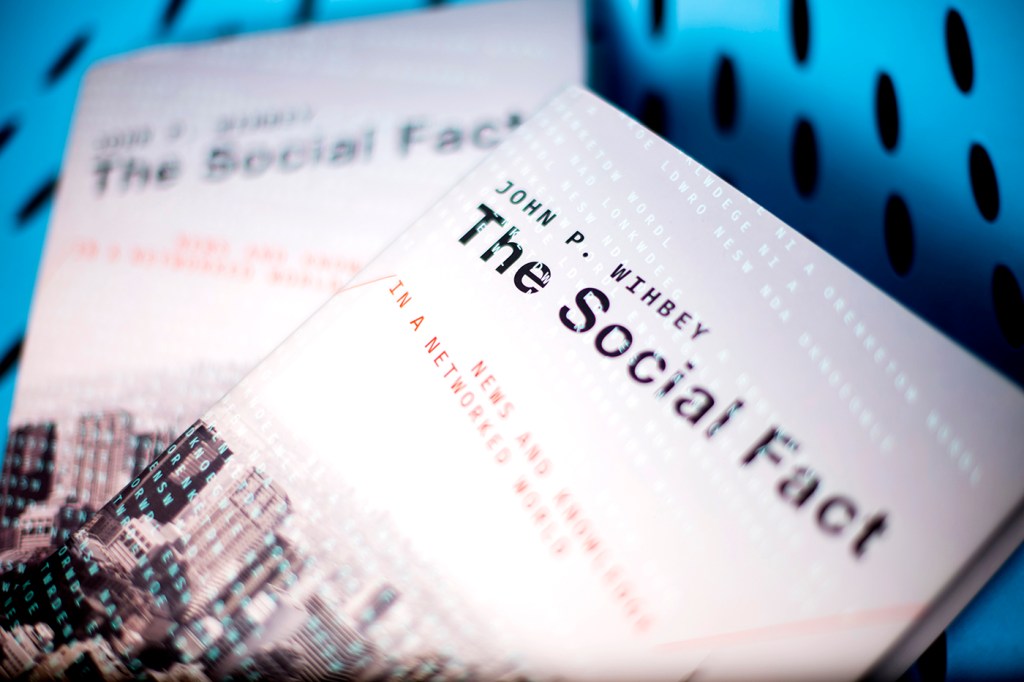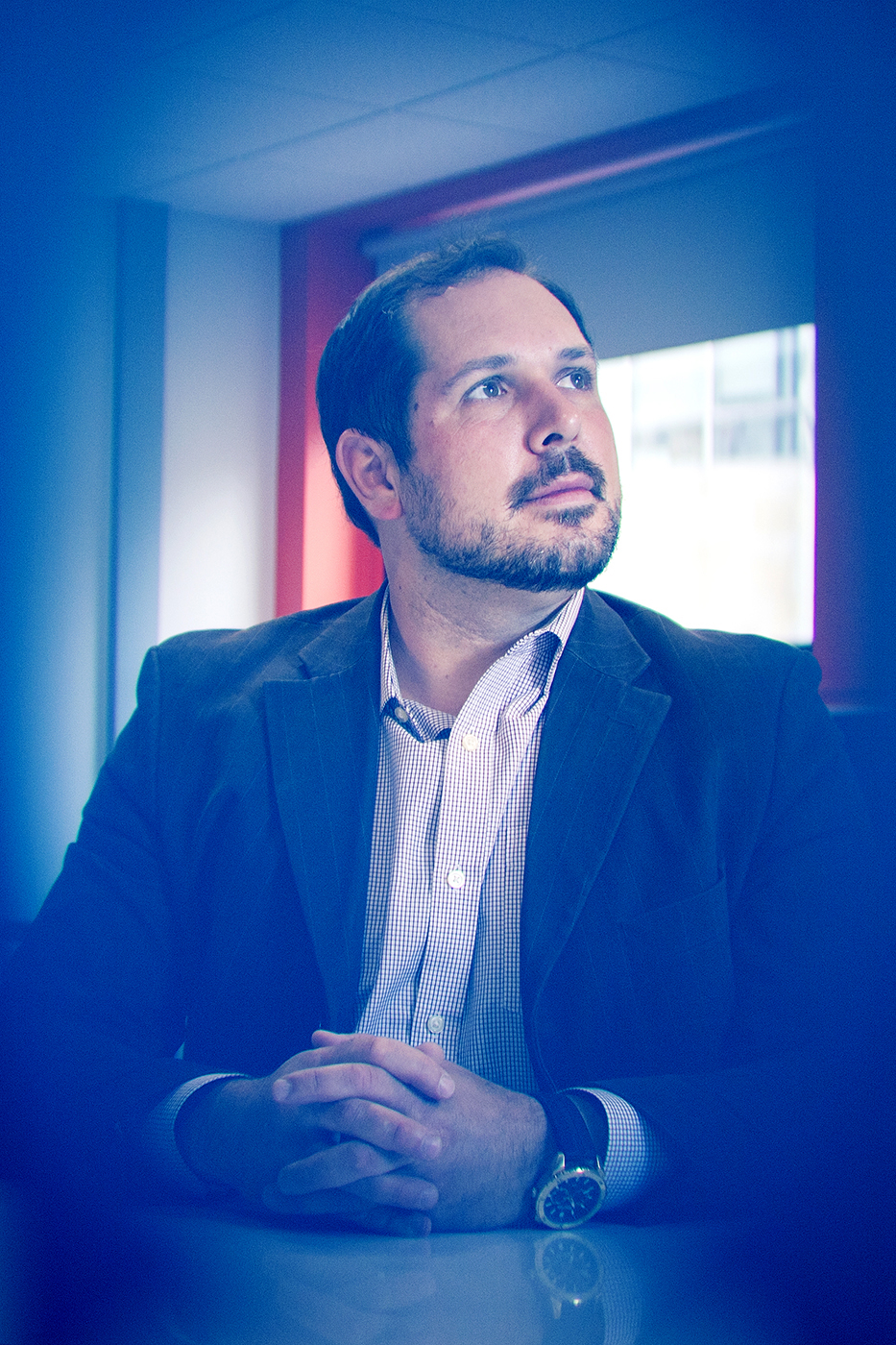To fight misinformation and fake news in the 2020 US presidential election, the news media needs to be reinvented

In the run-up to the 2020 presidential election, the United States is headed into what could be one of “the most extraordinary years of claims and counter-claims, misinformation, and fact-checking,” says John Wihbey, who is an assistant professor of journalism at Northeastern University.

“Now we have access to information, facts, and misinformation that’s much wider in scope,” Wihbey says. Photo by Matthew Modoono/Northeastern University
If the 2016 election was any indication—clouded as it was by misinformation—professional journalists need to do better when it comes to reporting the news, Wihbey says. The news media should provide readers, viewers, and listeners with more context for stories, rather than presenting a point and counterpoint without any analysis, Wihbey says.
In other words, the news media is due for a reinvention. And Wihbey has a plan.
In his new book, The Social Fact: News and Knowledge in a Networked World, Wihbey argues that journalism has to adapt to our digitally networked, socially connected world in a significant new way, which it has so far been slow to do.
The proliferation of social media platforms such as Twitter and Facebook means that people are more and more likely to encounter news for the first time when someone in their social circle posts about it. Often, these posts contain the poster’s opinion of the news, meaning that whomever is seeing them is getting news and opinion at the same time. This sort of socially mediated information is what Wihbey calls “social fact.”
“Information is increasingly filtered through social channels,” Wihbey says. “It’s different from the 20th century, when people got information directly from news sources such as TV broadcasts, or newspapers, or magazines.”
Journalists and news organizations have to acknowledge that people are increasingly presented with social facts (as opposed to empirical facts) and begin to produce news that addresses this shift, Wihbey says.
Social circles have existed since the dawn of humanity, and the mass media as we understand it has existed for hundreds of years. So, while social facts are not necessarily new problems, the internet has made them far more pervasive than ever before, Wihbey says. Anyone can hop online and consume information from anyone, anywhere, all the time.
“Now we have access to information, facts, and misinformation that’s much wider in scope,” he says. “Some of the problems with this are well-known: We can put ourselves in filter bubbles where we only interact with like-minded communities, and we can also find very extreme, fringe, interpretations of the world much more easily.”
Some of this expansive connectivity has spawned really good consequences, Wihbey says, such as Facebook groups for niche interests or shared experiences. But some of it has made it harder to tell what’s real and what’s not; what’s meaningful and what’s not.
Take, for example, a conspiracy theory that originated in fringe communities online: The idea that former president Barack Obama was not born in the United States, and therefore was ineligible to be president.
The idea is empirically false, and Obama produced his original long-form birth certificate in 2011 to quell what had by then become a widespread conspiracy theory. But journalists found themselves with a challenge: Should they report on an idea that was demonstrably false, but gaining traction nonetheless?
“The decision was to start fact-checking,” Wihbey says, “to start talking about it in the news media. But the more it was talked about, the more confusion was sown in the minds of the public.” As recently as late 2017, President Donald Trump questioned Obama’s birth certificate, and in 2018, prominent Republican politicians such as Joe Arpaio were still casting doubt on its authenticity.
What might have been a theory contained within certain fringe communities two decades ago became enormously important for U.S. politics today, Wihbey says. Journalists in particular and the news media in general must be ready to respond when social facts (‘Obama isn’t a U.S. citizen’) clash with empirical, well-grounded knowledge (he is), Wihbey says.
Journalists can do this by paying close attention to emerging conversations online, and by understanding and articulating exactly what the stakes are for people, Wihbey says. Journalists can also be thoughtful about which sources they interview and quote in stories, he says, and provide context for misinformation beyond “just a he-said/she-said setup.”
Reporters should find sources “within the communities that are susceptible to misinformation” but who don’t buy into the misinformation, Wihbey says. In the Obama birth certificate example, there were many prominent Republicans, including Vice President Mike Pence, who thought the issue was a ludicrous distraction. Highlighting those voices in a news piece about the issue can go a long way toward putting it to bed, Wihbey says.
It’s also important to add context to the issue, he says. Listing this conspiracy alongside several others that a particular fringe group believes, such as alien landings, “can help somebody who might be on the fence about what to believe,” Wihbey says.
News organizations, too, should be careful about the headlines they use, Wihbey says.
“You want to be sure that a person scrolling through Twitter isn’t going to get confused about whether this is negated or confirmed,” he says.
But, deliberate, thoughtful, slow reporting often runs counter to the current business model in news media, where volume, not quality, is prioritized, Wihbey says. This, too, must change.
“It’s this sort of stuff that makes you wonder whether what was good business and good practice in the 20th century makes any sense in the 21st century,” he says.
For media inquiries, please contact media@northeastern.edu.





